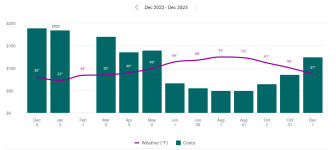I have a house under contract with a 24 year old, 30x15 rectangular inground, plaster pool located 25 miles east of Seattle (~100 ft above sea level ... so not in the foothills). Heater: 250,000 BTU Zodiac Legacy heater (natural gas). Filter: Pentair Tagelus with a leaking drain plug. Pump: Hayward 1.5 HP. The incandescent light (Swimquip 1) doesn't work and does not appear to be on a GFI 
I owned a swim spa for about 12 years at a prior home in the area and loved it -- used it year-round. I've always wanted an inground pool ... but not sure if this will be a dream-come-true or a nightmare. I don't mind spending my time, elbow grease, and a "bit" of money to get the pool in good working order, but don't want a money pit. I'm somewhat handy but not a mechanic or electrician. I'm very interested in adding a retractable (or permament) pool enclosure for year-round use.
I'd love some input and advice ASAP on:
I owned a swim spa for about 12 years at a prior home in the area and loved it -- used it year-round. I've always wanted an inground pool ... but not sure if this will be a dream-come-true or a nightmare. I don't mind spending my time, elbow grease, and a "bit" of money to get the pool in good working order, but don't want a money pit. I'm somewhat handy but not a mechanic or electrician. I'm very interested in adding a retractable (or permament) pool enclosure for year-round use.
I'd love some input and advice ASAP on:
- Gas and Electric Costs to heat May-October (with no enclosure) ... with and without a pool cover
- Experience with year-round swimming and cost to heat with a rectractable pool covers like the Laguna sold by Pool enclosures and patio enclosures from Pool and Spa Enclosures USA | sunrooms-enclosures.com)
- Best (safest, cheapest, longterm) solution for dealing with the non-operating pool light. Is this a job for an electrician? Should I switch to LED? Does the pool need to be drained to fix this?
- How to winterize if my closing / taking ownership happens in early February
- Questions I am not asking but should be ....


